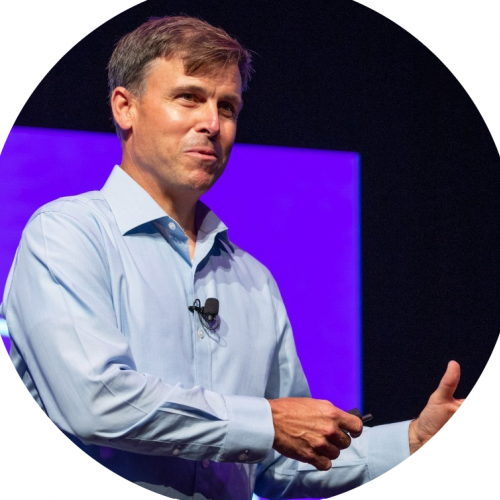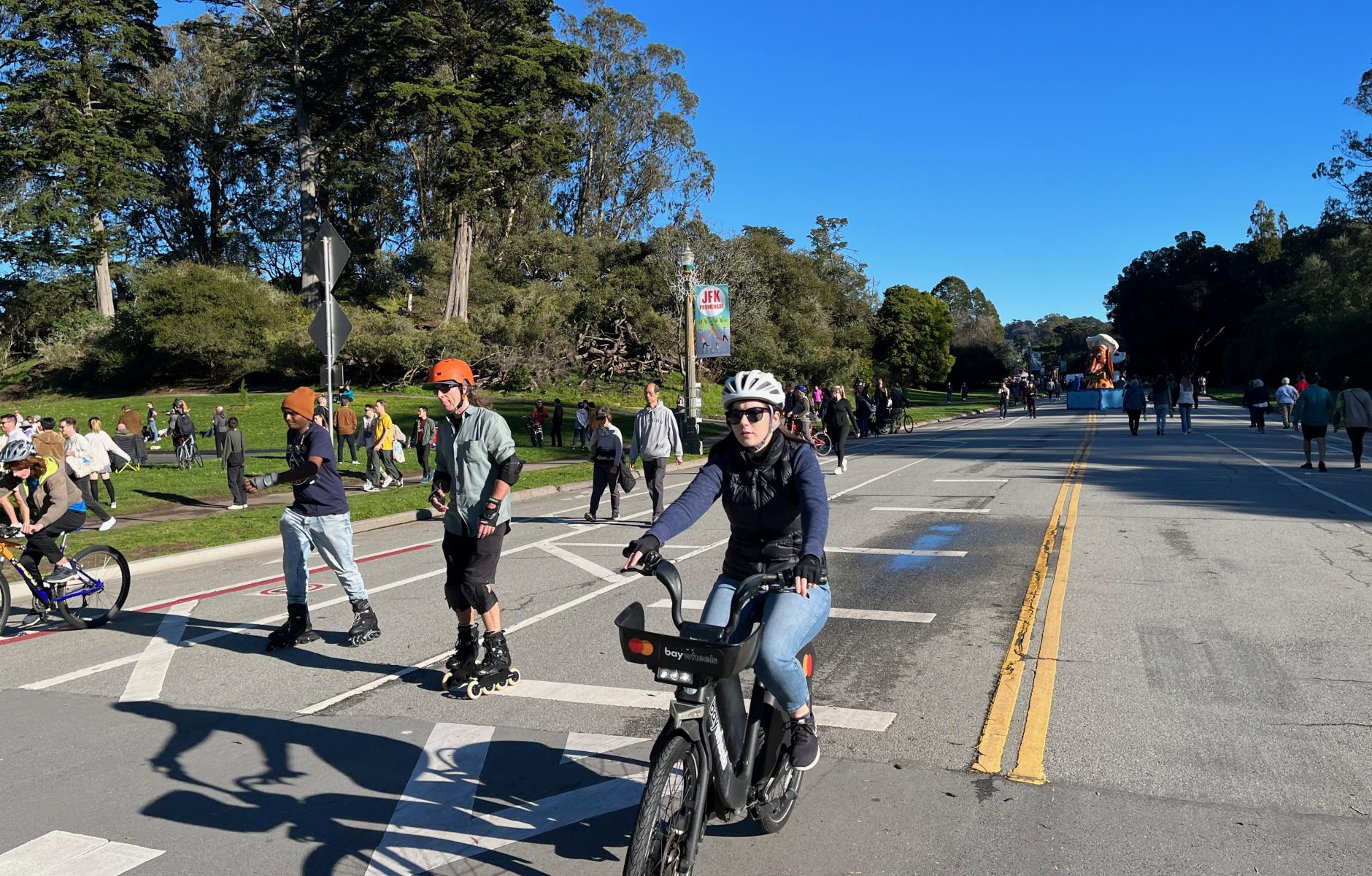
How JFK Promenade was saved
Phil Ginsburg, General Manager of San Francisco's Recreation and Park Department, refers to Golden Gate Park and its 152-year history as the "keeper of San Francisco's story." In November 2022, the story changed with a big win for community over cars. Voters overwhelmingly approved (63 percent of the vote) making a 1.5-mile stretch of JFK Drive, the central street in the park, permanently car-free.
Car-free and car-light streets are important spatial solutions to climate change, the breakdown of community, and chronic health issues linked to inactivity and isolation. Temporarily closing streets to cars and opening them to active transportation, recreation, and social interaction has surged in recent decades, starting with Ciclovia over 40 years ago in Bogota, Colombia. Despite their popularity and multiple benefits, temporary car-free streets rarely become permanent community spaces. That’s true in San Francisco, even with its reputation as a progressive city.
Car-free Sundays on JFK Drive started in 1967 during the spring and summer and expanded to Saturdays in 2007. JFK, however, was a car thoroughfare the other five days a week. Three out of four vehicles on JFK neither started nor stopped their trip inside the park. In addition, JFK Drive was on the city's High Injury Network— the 13 percent of the city's streets in which 75 percent of severe and fatal traffic collisions occur.
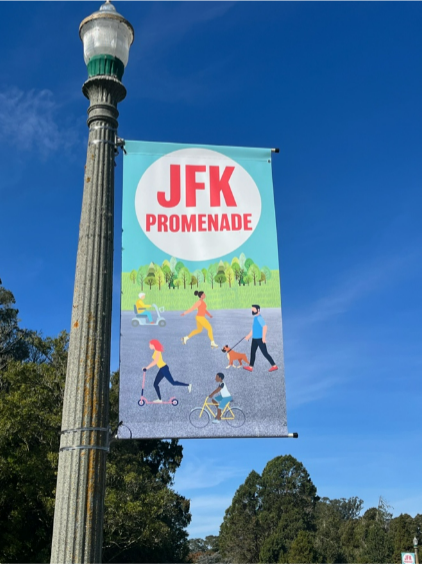
With the need for safe outdoor recreation space during the COVID-19 pandemic, 1.5 miles of JFK Drive was closed to cars for the first time, seven days a week. As the pandemic waned, pressure mounted to return cars to JFK. By then, visits to what had become known as the JFK Promenade had increased by 36 percent from before the pandemic.
In April 2022, sensing a groundswell of support, San Francisco supervisors voted 7 to 4 to permanently protect the JFK Promenade. Yet, this victory was short-lived. By July, a group of residents, backed by the DeYoung Art Museum, located on the JFK Promenade, gathered enough signatures to get a local proposition on the ballot to overturn the supervisors' decision. The matter was not resolved until the people's vote in November.
Car-centric status quo forces had defended JFK Drive for cars for over 50 years and again in 2022. What finally overcame it? To find out, I interviewed four local leaders involved in making JFK Promenade a reality and applied a systems lens to my analysis. It became evident that a dynamic combination of shifting power, transforming land use, and resetting culture led to victory. These three levers of systems change created momentum for subsequent wins for community over cars on San Francisco's streets.
Two established advocacy organizations, Walk San Francisco (Walk SF) and the San Francisco Bicycle Coalition (SF Bike), a new political organization Kid Safe SF, and the city's Recreation and Park Department (Rec and Park) each played essential roles in making the JFK Promenade permanent.
SF Bike had been advocating for decades to make JFK car-free. To save the JFK Promenade, they helped with community organizing and bringing groups together around the same messaging.
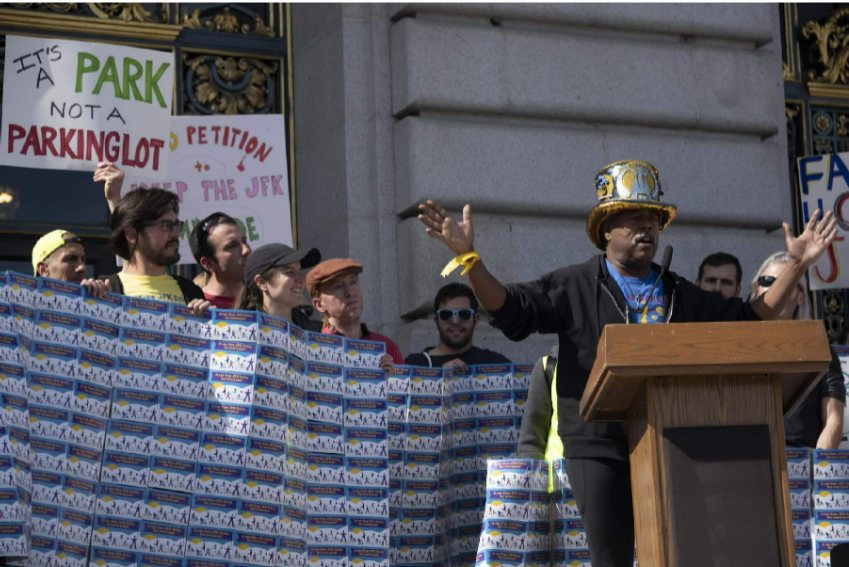
Walk SF saw JFK Promenade as an opportunity for safe walking and a significant step towards Vision Zero, the city's goal to end fatalities and severe injuries from traffic violence. They helped organize events, rallies, and tabling in public places to educate the public and gathered over 10,000 postcards from residents for delivery to San Francisco supervisors prior to their April 2022 vote.
Kid Safe SF formed in 2021 as a group of parent advocates for safe streets and green spaces for kids across the city. This volunteer-led organization ran the political campaign to save JFK and published policy papers on issues like parking.
As the steward of San Francisco's parks, Rec and Park activated the space and made it more accessible to disabled residents and others.
These organizations synergistically combined their unique strengths to gain broad support for the JFK Promenade. They collectively shifted power, transformed land use, and reset culture in favor of community space over cars.
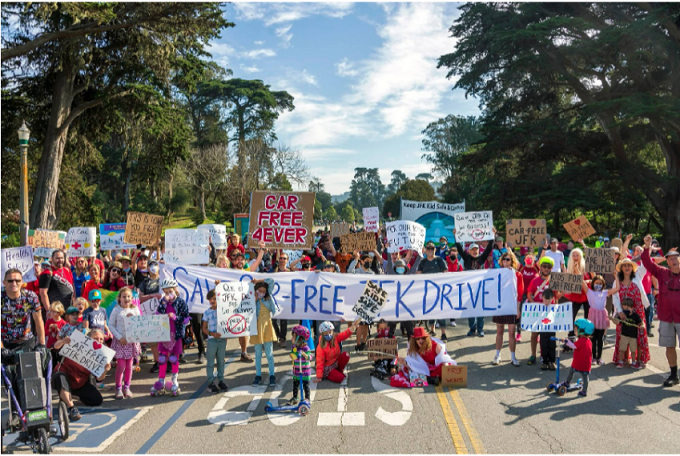
To build collective power and shift power away from the status quo, they made it about more than their individual organization's interests. Janelle Wong, executive director of SF Bike, shared, "This was not just the bike coalition acting as a special interest group. Together, we made it about families, pedestrians, cyclists, and a safe space for all users." Before this campaign, advocacy organizations had worked together on some issues but not in such a unified way in which they valued each other as equal partners. This diverse front surprised opponents as it wasn't just about defeating a special interest group as had happened in the past with pushing back against cyclists who wanted a car-free JFK.
The coalition to save the JFK Promenade grew in power as other community groups and advocates joined the grassroots movement. Advocacy groups for seniors, people with disabilities, and low-income communities raised concerns that were and continue to be addressed in improving the accessibility and equity of the promenade. Feedback was gathered from over 10,000 people and used to implement changes. Rec and Park worked with the local transportation agency (SFMTA) to increase shuttle service from low-income communities; added a free ADA parking lot near the Promenade; expanded white zones for vehicles dropping off people with limited mobility; and, in total, came up with about 40 policy strategies and mitigations. The process and resulting changes empowered more groups to feel a part of and advocate for the JFK Promenade.
The growing number of groups and people in favor of JFK Promenade translated into political power. Seeing its popularity, Mayor London Breed and the seven supervisors who voted for permanent protection helped campaign to save it. Rec and Park, SFMTA, and the mayor's office shared a unified message about the importance of the promenade to residents and the city.
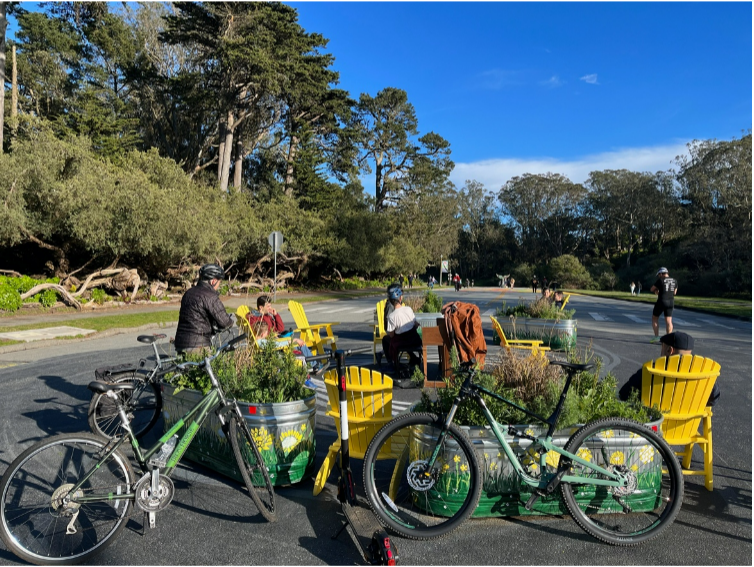
The opportunity to close JFK Drive to cars during the pandemic began the transformation of land use that led to its popularity. Barriers to vehicles at either end of the 1.5-mile stretch and intersections with crossing streets were essential but only the start of altering JFK Drive. In 2022, Rec and Park, in partnership with civic groups, artists, community groups, and public art firm Illuminate, installed the Golden Mile Project with large street murals, sculptures including three large Doggie Diner heads, seating areas, pianos, a ping pong table, a free library, a children's book walk, music stages, a beer garden, and other community amenities. The remaining street and sidewalk provided ample space for walking, biking, skating, and other means of active transport. The JFK Promenade was born.
The land use changes on JFK Drive played a vital role in saving the Promenade itself, particularly as the impetus to resetting culture around this urban street. Jodie Medeiros, Executive Director of Walk SF, described what was happening as "magical" and "a huge shift on 1.5 miles" in which "space that had held cars was given to all kinds of uses including sitting, playing piano, appreciating and making art, and kids learning how to ride a bike without parents worrying about their safety." Janelle Wong reflected on how JFK Drive transformed from "a pass-through for cars and some bikes" to "a playground for children and adults biking for recreation, walking, hanging out, and playing." The Promenade flourished with activity before the November 2022 vote.
Experiencing the promenade became an important part of many residents' lives. Robin Pam of Kid Safe SF commented, "San Francisco had been fighting over JFK for decades. Those before who wanted change had to sell a vision. The pandemic allowed people to experience the vision firsthand." Direct experience with the land use and cultural changes on JFK built broad support for saving the promenade.
On February 12, a celebration was hosted by Kid Safe SF at the Church of 8 Wheels, an indoor roller-skating rink run by SF's skating godfather and JFK Promenade advocate David Miles Jr. This event was not just a celebration of saving the promenade but also of the city's approval of a network of permanent slow streets (community spaces with local, slow car traffic only) and another car-free road along the ocean (on the weekends) shortly after the JFK Promenade win. In attendance were many supporters, including Mayor Breed, State Senator Scott Wiener, State Assembly Member Matt Haney, City Attorney David Chiu, and three San Francisco supervisors. The zeitgeist around San Francisco's streets has shifted, and politicians are paying attention.
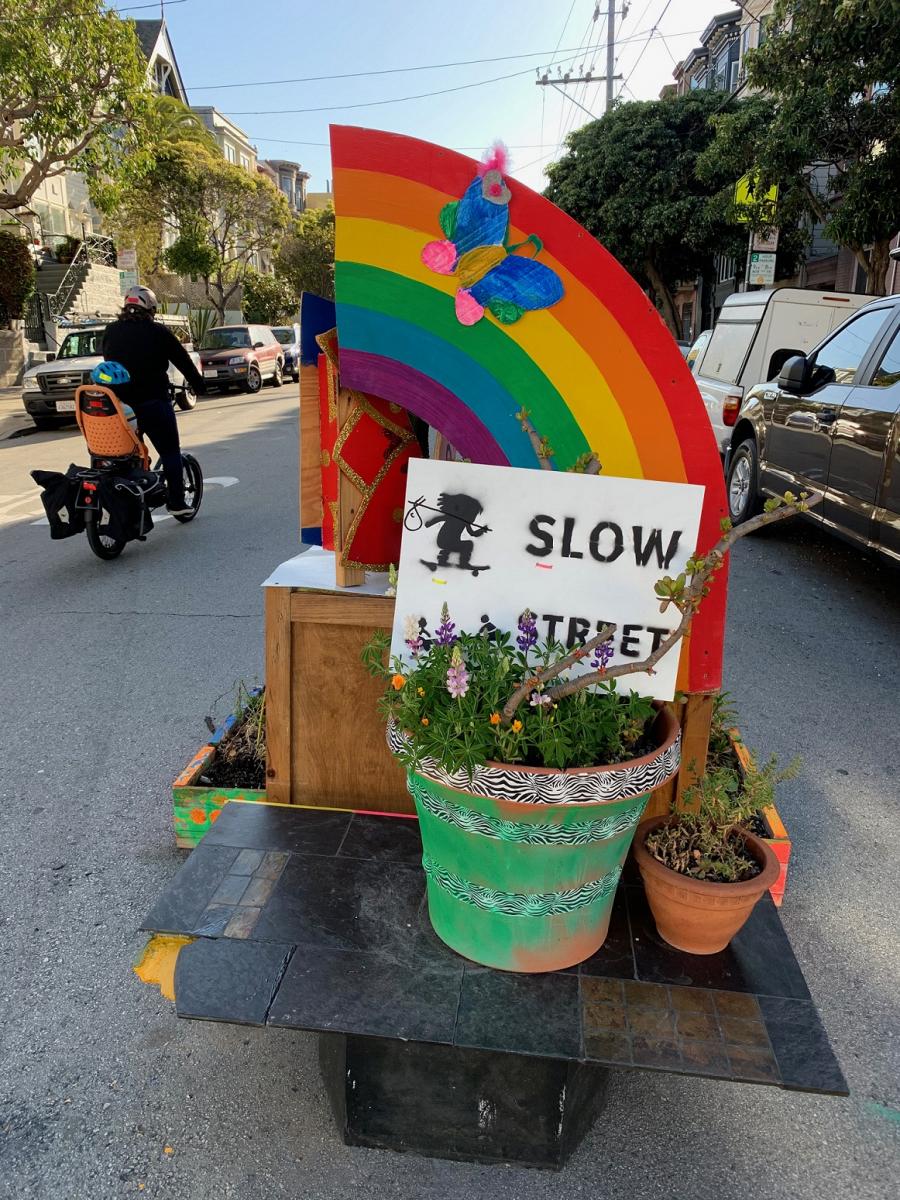
The leaders of the organizations that came together to save the JFK Promenade saw it as just the beginning of creating a more livable city. Many groups now want similarly transformed streets in neighborhoods across the city, adapting design elements from JFK.
The vision of a network of connected streets across the city for safe biking and walking no longer seems out of reach. Walk SF, SF Bike, and Kid Safe SF have joined other nonprofits to form the People's Slow Street Campaign. Forty organizations have already signed on to the campaign to expand the existing slow streets into a citywide 100-mile network and prioritize Equity Priority Communities through public investments and community-led processes. The city integrated the campaign's goals directly into its policy for slow streets.
Systemic change in a city's transportation and public space network is possible when a collective effort strategically focuses on shifting power, transforming land use, and resetting culture. As seen in San Francisco, change can multiply once the underlying political, physical, and cultural context becomes more supportive of community over cars. Temporary land use changes that alter people's attitudes, beliefs, and experiences mobilize them to join forces with others and overcome long-held status quo resistance. A virtuous cycle starts, and systemic change that seemed out of reach becomes possible. A new story begins.




